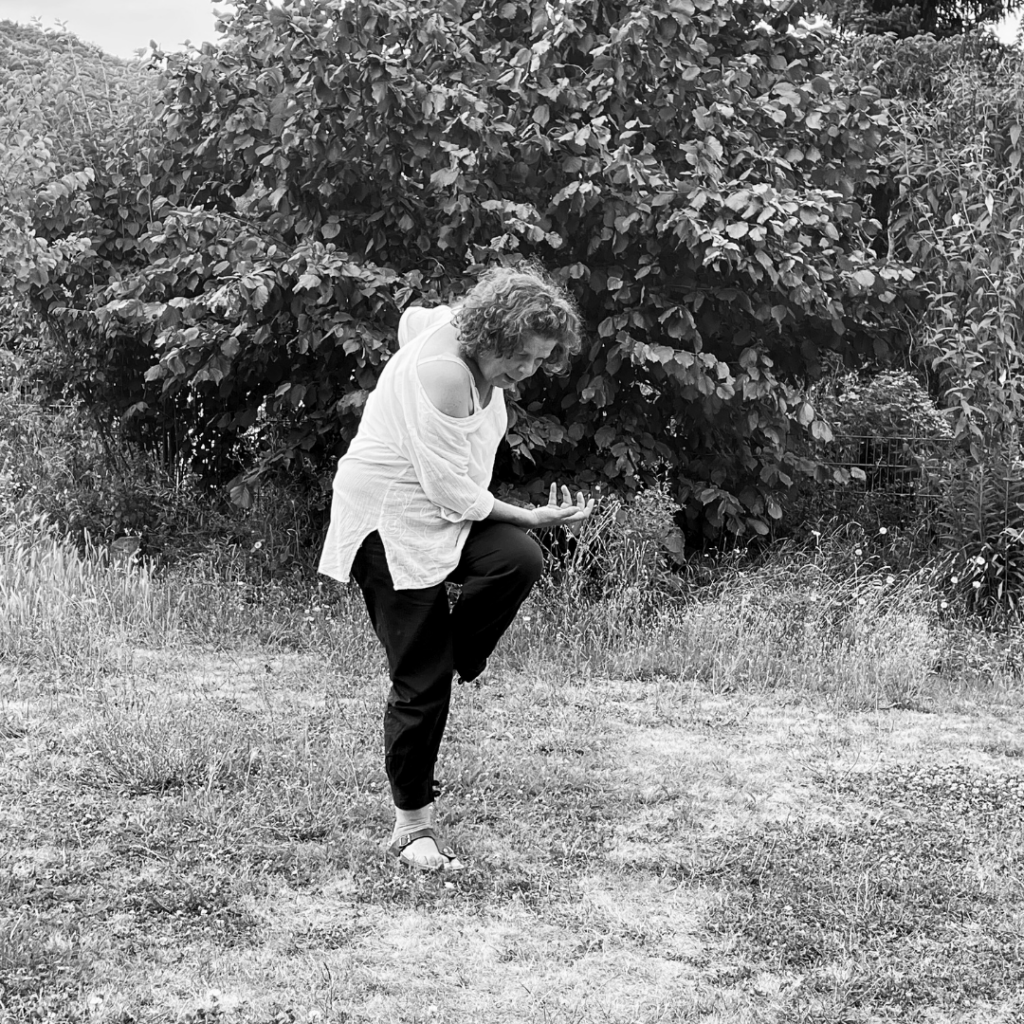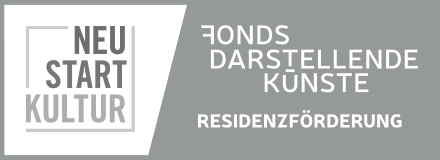
The third week of the residency began with work on plastic studies using the artistic expressiveness of the performer’s body. Why was this work emphasised? The composer provided his vision of the musical and noise accompaniment of this etude, dedicated to the study of the metamorphosis of the seasons. In principle, the music became a significant addition to the etude, becoming an “ally”, since the use of well-known musical compositions by Vivaldi or Haydn was a little bit fraught with a certain artistic “danger” for the research – such well-known musical pieces became too strong a partner, taking over more of the viewer’s attention and imagination – instead, the participants of the residency wanted the attention to remain on the plastic and emotional changes in the performer’s body and facial expressions.
In general, the work on this etude was quite interesting and fruitful.
At the same time, there are still open questions:
1. What do we prefer – pantomime, which should show the viewer familiar, recognisable pictures of the four seasons (grass sprouting, tree blossoming, withering, leaf fall, autumn weather and winter blizzard) or an expressively plastic expression of the actress’s own attitude to the seasons based on her individual experience and current feelings (in the regime here and now). What will be more understandable to the audience?
2. What should be the musical accompaniment of the sketch – should it be music itself or just a set of recognisable sounds associated with a particular season (dripping water as a spring drip, muffled heartbeat as an image of awakening or, on the contrary, falling asleep nature, gusts of wind in autumn). This question remains open, as the composer has made a mix of emotionally filled, compositionally complete musical themes and sounds/noises.
3. And the most important question (which will later be voiced by one of the viewers of the makingOFF presentation) is whether working with the body by manipulation is similar to the method of manipulating a puppet/object?

The second etude is more in line with the theme of the residency – when objects speak – a piece with paper. At the end of the residency, there was a serious technical work, or rather, field research into the physical properties of paper – which direction of movement and wrapping of the material is more successful and suitable for working on stage. It turned out that the angle of paper folding, the direction of its rolling, the diameter and density of the roll matter, because more used paper, the kind that has lost its “factory settings”, has greater plasticity and mobility. The laws of physics are really at work here – inertia, in particular, when the paper starts to “breathe” and move on its own at the slightest movement. It is really impressive, giving the idea that for these three weeks the object has become a full-fledged partner of the residence, having its own will and artistic vision.
The field tests of the physical, artistic and noise properties of sand as a speaking object continued. It is interesting that sand as an object and a matter is significantly different from the human body, but the questions to these matters are almost identical:
1. Which way to move for creativity process – recognisable pantomimic scenes (the sound of sand oscillating, reminiscent of Santa Claus’s Christmas bells in winter, building sand castles by the sea in summer, for example) or emotional scenes based only on the individual emotional experience of the performer? An interesting point is that when children attended the rehearsal last week, it was certainly more understandable for them to see scenes associated with daily activities. So, pantomime and imitation of life are winning in this research?
2. Should we use noises and sounds that will enhance the more naturalistic sound and perception of the scenes (the sound of the surf, seagulls’ cries, rain)?
However, there is a significant difference when working with body plastic and sand – the sand is definitely considered by the participants of the residency as an object. There are no objections or doubts here. Although during the presentation of the makingOFF – the important issue was raised – the sand is it an object or is it matter, texture, material?
Undoubtedly, the third part of the residency is the most exciting and responsible, as there was a meeting with the public, a makingOFF presentation. Of course, this event is not the goal of the residency in itself, but it is intended to provide feedback from the audience (both professional theatergoers and unprepared audience).
The participants of the residency had questions: what practical pieces should be presented to the audience for “judgment”? Which ones will be the most understandable or it shouldn’t be the purpose of the presentation. They also wondered whether it was necessary to conduct interactive activities involving the audience in improvisation, research, and spontaneous storytelling – all the stages and steps that the residency participants themselves went through. During the presentation, they sought to achieve the effect of immersing the audience in the nature of artistic research of the residency.





The moderator placed great emphasis on the questions that the participants of the residency should bring up for discussion with the audience. Therefore, a list of such questions was prepared:
1. What associations do you have when you hear the phrase “objects speak”?
2. How deep should the performer be immersed in the object, who should lead whom? In which direction does the manipulation work – the object leads the puppeteer or the puppeteer leads the object?
3. Is manipulation with the object a starting point for inspiration or an end in itself to “revive” matter/object?
4. What is the method to feel and to understand” the object?
5. When working with an object, should we look for its specific plasticity and sound (paper rustles, gum stretches, wood taps, plastic crashes) or should we try to find a special plasticity for it, depending on the idea and task of the performance/excerpt?
6. Does the object “sound” and act only in dynamics or also in static?
7. Should we (performers and creators) tell the audience about the theme of the improvisation with the object to give them the boundaries of the theme or should we keep the theme a secret, comparing the audience’s impressions with what we intended?
8. What is the concept of “metamorphosis” for you?
9. What examples of “talking proverbs with objects” can you give?

flausen+headquarters
Alexanderstraße 124
26121 Oldenburg
flausen+gGmbH
Klävemannstraße 16
26122 Oldenburg
Das überregionale Netzwerk flausen+ wird gefördert von der Beauftragten der Bundesregierung für Kultur und Medien über das Programm “Verbindungen fördern” des Bundesverbands Freie Darstellende Künste e.V.
Gefördert vom Fonds Darstellende Künste aus Mitteln der Beauftragten der Bundesregierung für Kultur und Medien im Rahmen von NEUSTART KULTUR.
Gefördert vom Fonds Darstellende Künste aus Mitteln der Beauftragten der Bundesregierung für Kultur und Medien.



